#osechi
Explore tagged Tumblr posts
Text

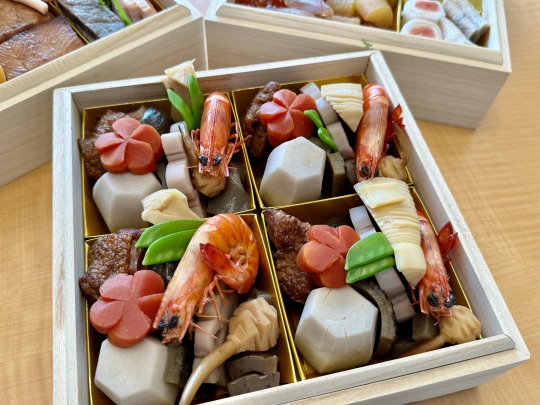


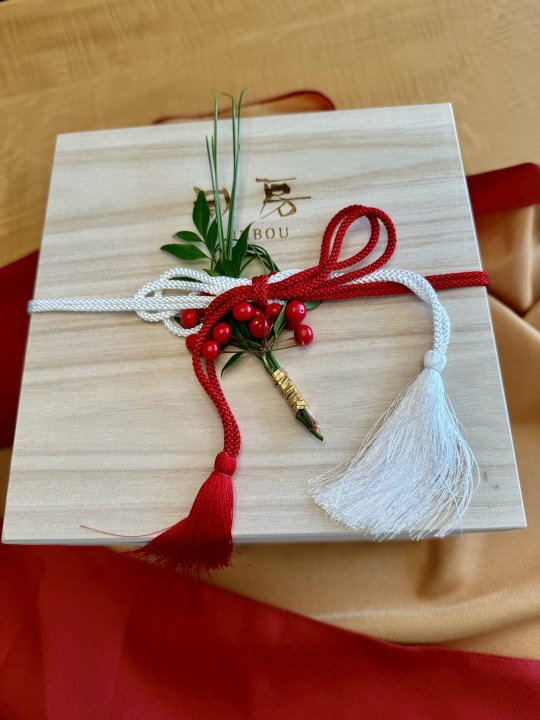
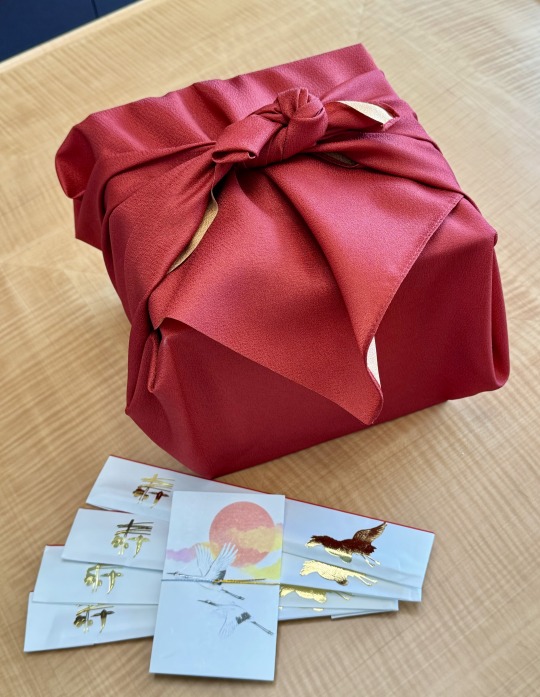

「Osechi-ryori」 New Year's dishes
Everything was excellent.
4K notes
·
View notes
Text

slightly better camera quality osechi
i was lucky enough to get her to 1* somehow and she is such a huge help her invic has saved my ass so much thank you osechi i will not be benching you
15 notes
·
View notes
Text
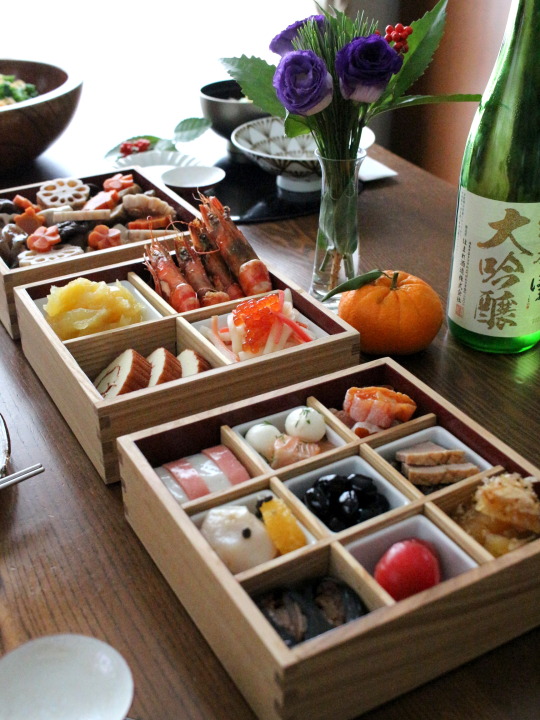
I wish you a great new year !!
134 notes
·
View notes
Text

Happy new year
12 notes
·
View notes
Text










おせち料理
Osaechi ryori
Japanese Osechi-ryori are traditional dishes eaten on New Year's Day.
Zoni is made of mochi (rice cakes) and vegetables cooked in soup.
Oshiruko is made of mochi and sweet red beans.
10 notes
·
View notes
Text

Happy New Year. ✨☺️🌅
May this year be filled with lots of laughter. 🍀☺︎
#happy new year#snake#year of the snake#smile#newyears#osechi#osechi food#omochi#ozoni#fortune#new year card#new year cake#lucky bag#oshiruko#grandma#grandpa#first dream#japan#music#singer#singersongwriter#art#artist#song#tokyo#osaka#guitar#love#happy#very happy year
12 notes
·
View notes
Text
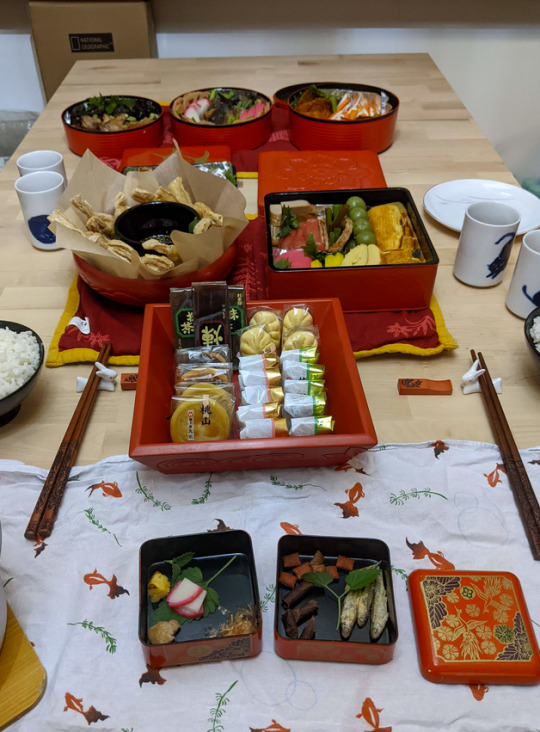
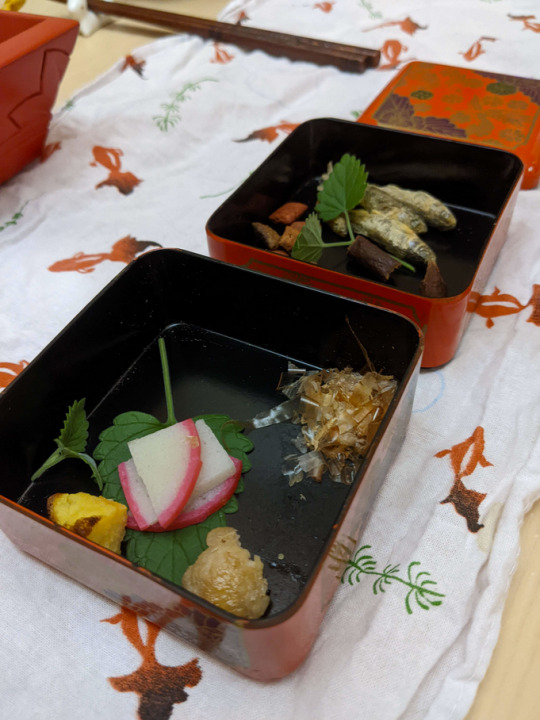

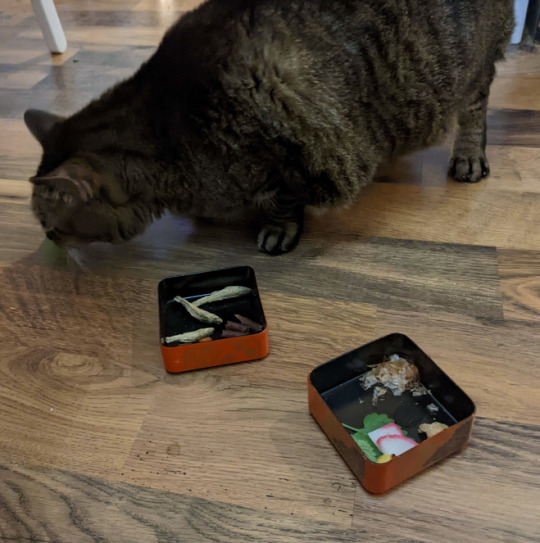
Happy New Year everyone!
I know I haven't been super artistically active this year and I know a lot of the rest of yall have been in a similar boat.
I think I learned a lot this year about small things, like putting away dishes and finding out what kinds of soap I like and what kinds of clothing I feel comfortable in, and I know that's not impressive or a real marker of personal growth, but I know that I am still moving and changing and living, even if it's not impressive or concretely better, and I think that's worth celebrating too.
Here's the gorgeous Osechi spread that Bat put together for us including the meticulously folded but visibly unimpressive tinfoil that I did, and a teeny tiny Jubako for Dexter.
Lot of love for you all, all across the world in all your different situations and lives! Let's grow and change together!
#osechi#jubako#food#the lotus root isn't very visible but if anyone needs me to tag for it lemme know#food is art too mister dragon
37 notes
·
View notes
Text

Hello2024
おせちは広い意味でお弁当なのでは?と思うので今年もここにポストします。
かまぼこ以外は自作です。
32 notes
·
View notes
Text

🥳Happy new year to everyone. 🎉
🌅新年あけましておめでとうございます⛩
🎍良いお年をお過ごし下さい🎍
#osechi#お節#new year#Japanese new years dish#happy new year#new years 2025#food#dish#traditional cooking#新年明けましておめでとうございます#お正月#お正月2025年#2025年
3 notes
·
View notes
Text
Mesele sadece Noel meselesi mi?
Yılın bu zamanını pek severim. Hep severdim. Hatta bir seferinde yine geleneksel Aralık alışverişi sırasında Emek “Sen geçmiş hayatında Vatikan’da Noel hazırlıklarını organize eden bir azize olmalısın” demişti. Benim de kendime “Acaba Katolik özentisi miyim?” diye sorduğum çok oldu. Sonra aklıma Nuri Bilge Ceylan’ın Kış Uykusu filmindeki o meşhur replik geldi. Hani Haluk Bilginer’in söylediği: “Yani bu insanın kendine bir dünya yaratabilme, kendini oyalayabilme yeteneği ile ilgili bir şey.”

Kış tüm toplumlar için her zaman zordu. Gün ışığından fakir, ısınmak ve beslenmek için daha çok efor sarfedilen günler, karanlık ve uzun geceler. İnsanların kışın kutlanan özel günleri bu vakti geçirebilmek, anlamlı bir şekilde değerlendirebilmek ve böylece göz açıp kapayıncaya kadar bahara kavuşabilmek için ürettiğine inanıyorum. Bunu çok insani buluyorum.
Hatırlar mısınız? Geçtiğimiz yıl Nardugan Bayramı gündem olmuştu. Bu dönemde dünya noel havasına girince toplumun bir kısmı bunun Türk ve İslam adetlerine uygun olmadığını, bir kısım da aksine bu geleneklerin Türk topluluklarında doğduğunu iddia etmişti.

Ayaz Ata ve Kar Kızı
Türkolog Murad Adji ve sümerolog Muazzez İlmiye Çığ, İslamiyet öncesi Türkler'in her yıl 21 Aralık'ta bir kış gündönümü bayramı olarak Nardugan’ı kutladığını ve bu bayramın Hristiyanlıktaki Noel yortusunun atası olduğunu öne sürmüştü.
Aktarılana göre Ayaz Ata isimli figür, Türk ve Orta Asya mitolojilerinde soğuk tanrısı. Ayaz Ata göğün altı deliğinden soğuk hava üfler ve böylece kış gelir. Kimi kültürlerde kışın soğukta ortaya çıkan ve kimsesizlere yardım eden bir evliyadır. Bir tür Noel Baba gibi düşünülebilir. Kazaklarda ise ilk karın yağması ile kutlanan Soğumbası isimli bir eğlence var. Azericedeki Şahta Ata sözcüğü de yine Ayaz Ata anlamına geliyor.
Buna karşın kimi Türkologlar İslamiyet öncesi Türklerin böyle bir bayram kutladığını gösteren bir belge olmadığını, Nardugan’ın Hıristiyanlıktan etkilenmiş Türk kökenli topluluklar tarafından kutlandığını iddia etmiş. Hala bazı Türk toplulukları Nardugan kutlanmaya devam ediyor. Bodrum’un Gündoğan beldesinde de 2010’dan beri Nardugan kutlaması yapılıyor. 21 Aralık gecesi ateş yakılıyor, Ege türküleri eşliğinde yöresel oyunlar oynanıyor.

Kolombiya'da Mum Günü
Sadece Türklerde ya da Avrupa’da değil, birçok başka yerde de kışın kutlanan bayramlar var. Örneğin Kolombiya’daki Mum Günü. Her yıl 7 Aralık’ta pencerelerde, balkonlarda, kaldırımlarda, insanların görebilecekleri her yerde mumlar yakılıyor. Yakılan her bir mum için dilek tutuluyor ya da şükrediliyor. "Natillas" adı verilen bir muhallebi ve yine bölgeye özgü bir sıcak çikolata tüketiliyor.

Natillas
Porto Riko’da "Parranda" adı verilen kış partileri var. Parranda “çılgınlık” demek. Kalabalık bir grup olabildiğince sessiz bir şekilde bir evin önünde toplanıp, coşkulu bir müzikle ev halkını uyandırıyor. Ev sahibinin ikramda bulunması ve partiyi sonraki eve taşımak için gruba katılması bir gelenek. İkramlar arasında Arroz con Dulce adı verilen yöreye özgü bir tür sütlaç ve coquito var. Bu geleneğin aile ve arkadaşlık bağlarını güçlendirdiğine inanıyorlar.

Arroz con Dulce
Ekvador'da yeni yıl arifesinde, eski yılın yakılması anlamına gelen "Quemar el Año Viejo" isimli bir gelenek var. Yakılan şey geçmiş yılın başarısızlığını temsil eden bir kukla veya sevilmeyen bir siyasi figür olabilir. Başarısızlıklarla ilgili yazılan bir not kuklaya iliştiriliyor ve sonra ateşe veriliyor. Bu gelenek ile önceki yılın pişmanlıklarını ve hayal kırıklıklarını yok ettiklerini düşünüyorlar.

Ekvator'da Quemar el Año Viejo geleneği
Rusya'da yeni yılda iki farklı kutlama var. Biri Gregoryen takvimine göre 31 Aralık’ta büyük partiler ve havai fişek gösterileri ile kutlanan "Yeni Yıl". Diğeri de Gregoryen takvim benimsenmeden önce kullanılan Jülyen takvim 13 gün geride kaldığından, 14 Ocak'ta kutlanan “Eski Yeni Yıl”. Genellikle aileleriyle geçiriyorlar. Bugün aynı zamanda Ded Moroz'un (Ayaz Ata) hediyeleri dağıtmak için torunu Snegurochka (Kar Kızı) ile birlikte çocukları ziyaret ettiği gün. Süslenen ağaçlara Noel ağacı yerine Novogodnaya Yolka diyorlar.
Çin’de kışın birden fazla bayram kutlanıyor. İlki, Çin takviminde 12. ayının 8. günü kutlanan Laba Festivali. “La” 12. ayın adı ve “ba” sekiz anlamına geliyor. Laba Festivali sırasında insanlar -bizim aşuremize benzer- pirinç, fasulye, fıstık, kuru meyve, lotus çekirdeği gibi malzemelerden oluşan Laba lapası yiyor.

Çin'de Laba lapası festivali
Yine Çin takvimine göre 12. ayın 23. günü Küçük Yeni Yıl’ın başlangıcı. İnsanlar evlerini temizlemeye ve yeni yıl alışverişi yapmaya başlıyor. Kış sonu ise Çin Yeni yılının başlangıcı, Bahar festivali olarak da geçiyor. Çünkü aynı zamanda baharın başlangıcı. Küçük Yeni Yıl ile Çin Yeni Yılı arasında farklı tanrılara tapılsa da ana temalar aynı: geçmişe veda, yeni yılı karşılama, tanrılara ve atalara tapınma, sağlık ve bereket dileme.
Japonya’da yılbaşı gecesi yılın en büyük kış kutlaması. Japonlar parti ve büyük geçit törenleri yerine, genellikle evde yemek pişiriyor, pirinç keki yapıyor, evi temizliyor ve aileleriyle oyunlar oynuyor.

Toshikoshi Soba

Osechi
Yapılan yemekler arasında yeni yıl için iyi şans getirdiğine inanılan “toshikoshi soba” isimli bir erişte, ayrıca deniz ürünleri, jambon, yumurta, sebzeler, siyah fasulye gibi ürünlerin azar azar bulunduğu bir yiyecek kutusu olan “osechi” yer alıyor. Tüm malzemelerin iyi şans, iyi sağlık ve uzun ömür getirme gibi özel anlamları var. Gece yarısı Budist tapınaklarında, yeni yılda daha huzurlu bir zihne kavuşabilmek adına, 108 dünyevi arzudan kurtulmak için 108 kez çan çalınıyor.

Budist tapınağında 108 kez çan çalan rahip - Joya no Kane geleneği
Avrupa’dan pek bahsetmedim. Az çok o taraflara hakimiz. So sorry Jesus. Sonuç olarak insanlığın büyük kısmı geçmişte yaptığı hataları unutmak, kendilerini affetmek, yeni yılı yeni bir başlangıç olarak kabul etmek, elindeki nimetlere şükretmek, sağlık, bereket ve huzur dilemek, kolay bir kış geçirmek, verimli bir bahara erişmek, aileleriyle ve arkadaşlarıyla bağlarını güçlendirmek, yani anlamlı bir şeyler yapmak istemiş.
Ben de her yıl yaptığım gibi zencefilli kurabiye için gereken malzemeleri aldım. Akşamları sıcak çikolata yapıp içine marşmelov atıyorum. Nar likörü serin ve karanlık bir dolapta bekliyor. Ara ara çalkalıyorum. Evdeki kar kürelerine, yanıp sönen ışıklara, parlak kırmızı paketlerindeki çikolatalara gidip gelip bakıyorum, içim açılıyor. Sıcak şarap için portakal ve ayva buz dolabında. Bazı akşamlar orgun başına gidip Jingle Bells çalıyorum. Zaten bir tek onu çalmayı biliyorum.
Kış benim için yazdan önce çekilmesi gereken bir cefaydı. Artık anlıyorum ve tadını çıkarıyorum. Sonuçta ben zor bir dönemi atlatırken, yaşama karşı heyecanını taze tutmak isteyen sıradan insanlardan biriyim. Kendimi oyalayabilme yeteneğim ile gurur duyuyorum.

Yine Kış uykusundaki replikten devam etmek isterim:
“Sıkılmak ne demekmiş? Sıkılmak için hiç vaktim olmadı benim. Ayrıca sıkılmak denen duygunun son derece lüks olduğunu düşünüyorum. Sen sıkılıyorsun çünkü hiçbir şey yapmadan öyle süzülüp duruyorsun güzelim.”
Sıkılma güzelim güzel şarkılar var. Portakal, tarçın, zencefil, karanfil kokuları var. Yağmur yağarsa şemsiye var. Poyraz çıkarsa güneyde oturacak yer var. Gülecek epeyce malzeme var. İçecek sıcak bir şeyler de var. Üstelik belki de birinin sana küçük bir hediyesi var.
19.12.24 Kaynakça Türk Söylence Sözlüğü, Deniz Karakurt, 2011 İslamiyet Öncesi Türk Gelenekleri, Nardugan Bayramı Örneği, Hakan Aryol, 2022 Prof. Dr. Abdulhaluk Mehmet Çay: Nardugan Bayramı ve Yılbaşı kutlamalarının tarihi kaynaklarda yeri yok, 2019 Colombia’s Day of the Little Candles Tradition, Adam McConnaughhay, 2024 Holiday Traditions in Puerto Rico Latin American New Year Tradition: Burning the Año Viejo Doll for Positive Energy, Alejandra Espinosa, 2022 New Year’s Traditions in Russia, 2014 Chinese New Year Celebrations and Activities Essential Guide to New Year Traditions in Japan, Julia LiMarzi, 2018
#Noel#Kış#Kış Ruhu#Kış Kutlamaları#Noel Ruhu#Kış Festivali#YeniYıl#KışMasalı#Yılbaşı#Gelenekler#Nardugan#Ayaz Ata#Kar Kızı#Mum Günü#Parranda#Çin Yeni Yılı#Festivaller#toshikoshi soba#osechi#Laba Festivali#Küçük Yeni Yıl#Novogodnaya Yolka#Snegurochka#Ded Moroz#Eski Yeni Yıl#Yeni Yıl#Quemar el Año Viejo#Arroz con Dulce#coquito#Natillas
4 notes
·
View notes
Text
Osechi cuisine: New Year's cuisine (prose, cooking)

2 dishes

Sea bream sashimi
Our osechi cuisine (New Year's cuisine) from 2005. The first photo, left: On the left is Datemaki (an elaborate omelet), on the right is Konbumaki (seasoned kelp wrapped around salmon), in the center is Kazunoko (processed herring roe), and the second photo: Sea bream sashimi. All are delicious. Welcoming in the New Year with a little luxury.
2025.01.01
おせち料理:正月料理(prose,cooking)
2皿
鯛の刺身
わが家の2005年のおせち料理(正月料理)。一枚目の写真左:左が伊達巻(手の込んだ卵焼き)、右が昆布巻き(鮭を包み込んだ味付け昆布)、中央が数の子(ニシンの卵を加工したもの)、2枚目の写真:鯛の刺身。どれも美味しい。ちょっと贅沢して、新年を迎える。
#osechi cuisine#New Year's cuisine#Osechi#prose#cooking#rei morishita#Datemaki#Konbumaki#Kazunoko#Sea bream sashimi
4 notes
·
View notes
Text
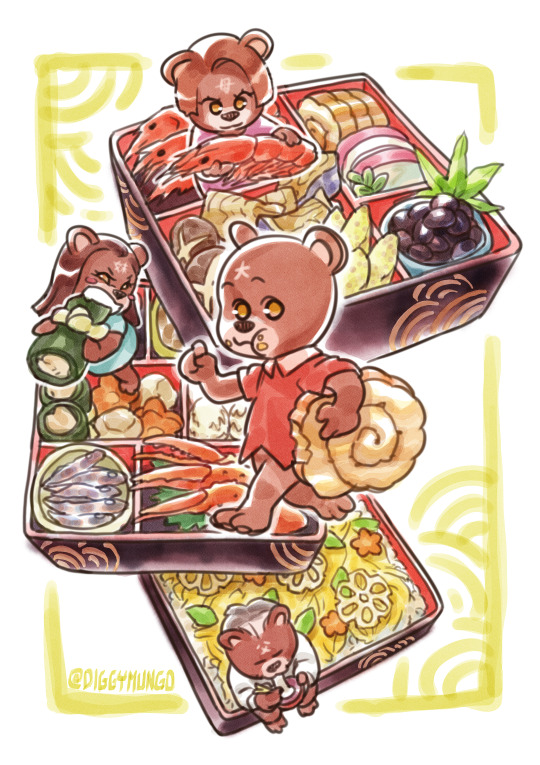
おせち料理
14 notes
·
View notes
Text

Osechi by @cozypersimmon
#osechi#japanese culture#japanese food#digital illustration#illustration#digital art#procreate#drawing#sushi#persimmon#redbubble
3 notes
·
View notes
Video
youtube
2024年のおせち料理 Japanese New Year's Food【重箱に盛り付け】
30 notes
·
View notes
Text
Osechi
“Osechi” Cedar Park, 2024 First meal of 2024! Super-delicious osechi ryori for a prosperous new year. Good luck everyone! “Lani” Cedar Park, 2024

View On WordPress
2 notes
·
View notes
Text



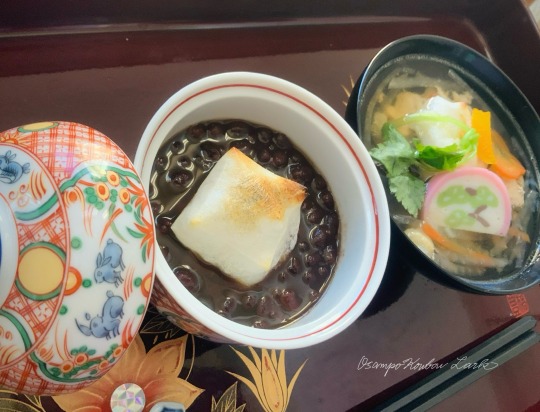
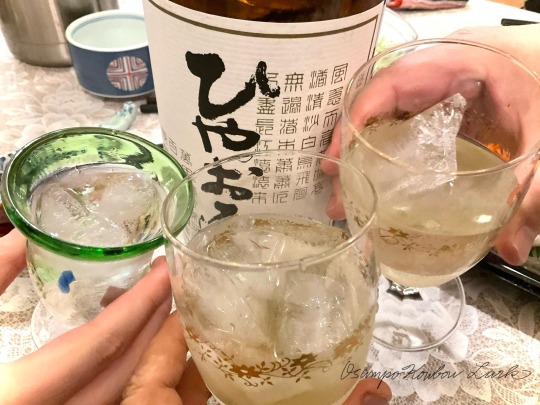
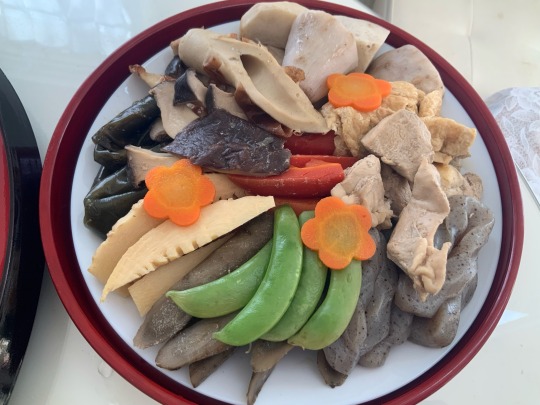

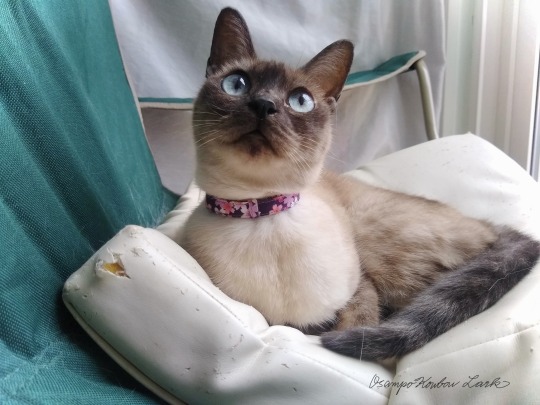
あけまして おめでとう ございます♪
akemashite omedetou gozaimasu
Happy new year!
I made some Osachi new year plates for my family.
and show you my cute cat Anzu. ฅ(*ΦωΦ*) ฅ
48 notes
·
View notes